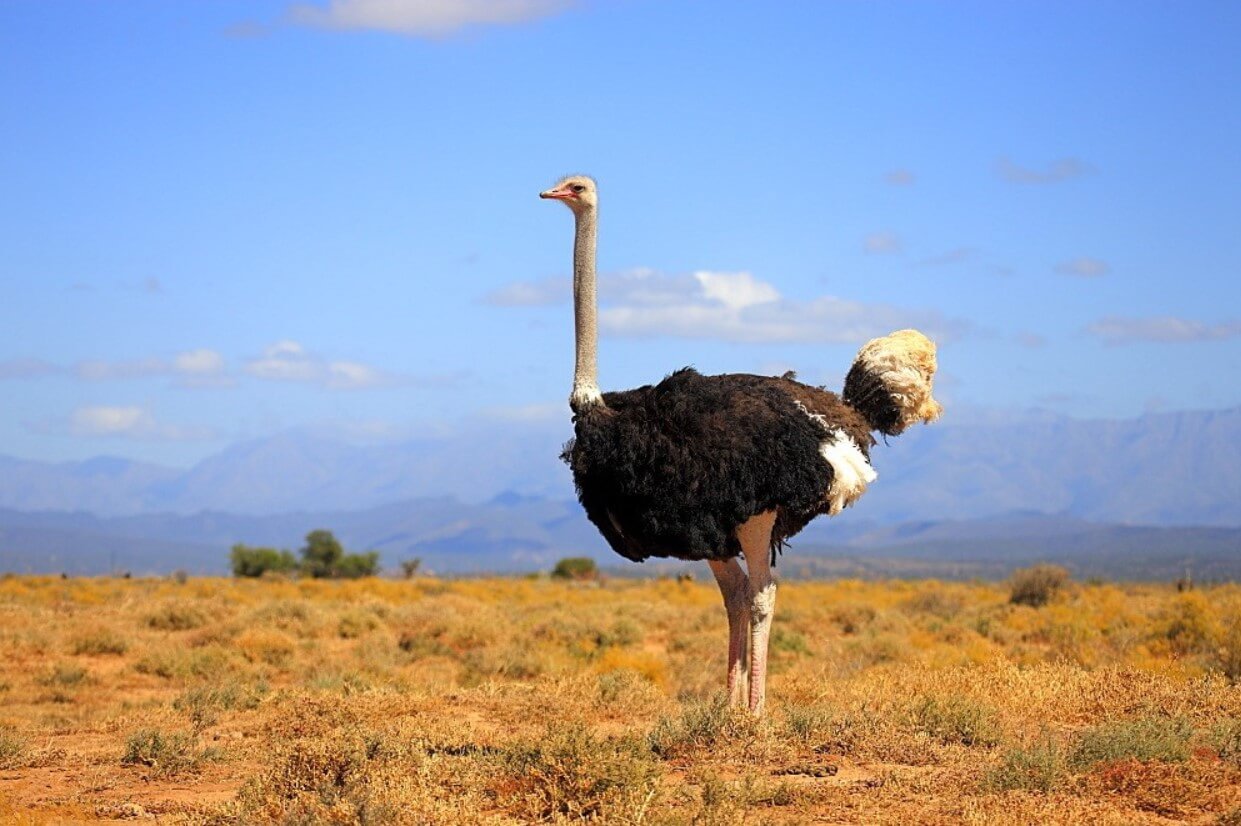Can Ostriches Fly? In the realm of the avian kingdom, birds have evolved in fascinating ways to conquer the skies. But when it comes to ostriches, it’s a different story altogether. These remarkable creatures are renowned for their astounding size and speed, yet they remain firmly grounded. In this article, we’ll delve into the intriguing question: Can ostriches fly? Prepare to embark on a journey through the world of these magnificent flightless birds.
Introduction
Ostriches, with their impressive size and unique characteristics, have long captivated the imagination of people worldwide. One common misconception about these birds is whether they possess the ability to fly. Let’s embark on a journey to uncover the truth behind this enigma.

The Ostrich: An Extraordinary Avian
Ostriches, scientifically known as Struthio camelus, hold the title of being the largest birds globally, standing up to 9 feet tall and weighing up to 340 pounds. Native to Africa, these flightless wonders are a sight to behold on the vast savannahs.
The Anatomy of Flightlessness
The answer to the question of ostrich flight lies in their anatomy. Unlike soaring birds, ostriches have heavy, robust bodies and small wings that are incapable of generating the lift needed for flight. Their feathers are designed for insulation rather than aerodynamics.
Speed Demons of the Savannah
Though they can’t take to the skies, ostriches compensate with their incredible speed. They are renowned for being the fastest land birds, capable of reaching speeds of up to 45 miles per hour, which allows them to evade predators effectively.
The Evolutionary History
Understanding ostrich evolution provides valuable insights into their flightlessness. Over millions of years, ostriches evolved to adapt to a terrestrial lifestyle, losing their ability to fly in exchange for enhanced running capabilities.
Ostrich Behavior and Habits
Ostriches are social creatures, often found in groups known as flocks. They are herbivores, primarily feeding on plants, seeds, and insects. Their keen eyesight and powerful legs aid in foraging for food and detecting potential threats.
Ostrich Reproduction: An Insight
The reproductive habits of ostriches are equally fascinating. They lay the largest eggs of any bird species, with a single egg weighing approximately 3 pounds. Both male and female ostriches share incubation duties.
The Myth of Ostriches Burying Their Heads
Contrary to popular belief, ostriches do not bury their heads in the sand when frightened. This misconception likely stems from their habit of lowering their heads to the ground to inspect their nests.
Human Interaction with Ostriches
Humans have had a long history of interaction with ostriches. From domestication attempts to utilizing their feathers for fashion, these birds have played various roles in human society.
Ostriches in Popular Culture
Ostriches have made their mark in popular culture, appearing in books, movies, and folklore. Their unique appearance and behaviors have earned them a special place in storytelling.
The Conservation Status of Ostriches
Despite their iconic status, ostriches face threats from habitat loss and poaching. Conservation efforts are crucial to preserving these magnificent birds for future generations.
Why Can’t Ostriches Fly?
The fundamental reason ostriches cannot fly lies in their skeletal structure, wing size, and overall body design. Their large, flightless bodies are optimized for life on the ground.
Adaptations for Terrestrial Life
Ostriches have adapted remarkably well to terrestrial life. Their powerful legs enable them to cover great distances in search of food and water, making them well-suited to the arid regions they call home.
The Power of Ostrich Legs
Ostrich legs are not only built for running but also for defense. These formidable limbs can deliver powerful kicks capable of fending off predators, making ostriches a force to be reckoned with.
Conclusion: Celebrating Earth’s Majestic Flightless Bird
In conclusion, ostriches are Earth’s largest flightless birds, known for their remarkable speed, size, and adaptations to terrestrial life. While they may not grace the skies, ostriches are truly exceptional creatures that deserve our admiration and protection.
FAQs for Question Can Ostriches Fly:
- Do ostriches have wings? Ostriches do have wings, but they are small and not suitable for flight. Instead, they serve other purposes, such as balance and display.
- Are ostriches good swimmers? Ostriches are not known for their swimming abilities. They prefer to stay on land and rely on their running speed for survival.
- Can ostriches be domesticated? Yes, ostriches can be domesticated, and they have been raised for their meat, feathers, and leather.
- Do ostriches live in groups? Yes, ostriches are social birds and often live in groups called flocks.
- Are ostriches endangered? Ostriches are not currently considered endangered, but their populations in the wild are declining due to habitat loss and hunting.
As we wrap up our exploration of ostriches, it’s clear that these flightless giants have a unique place in the natural world. While they may not take to the skies like their avian counterparts, ostriches remain a symbol of the diverse and extraordinary creatures that inhabit our planet.
